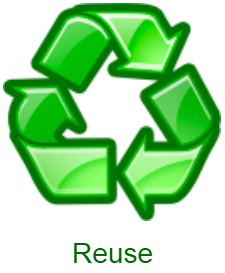可生物降解和不可生物降解的材料
可生物降解材料是在细菌、真菌和其他生物体的作用下容易分解的物质。可生物降解的物质通常包括在日常使用中发现的物质,例如食物垃圾、树叶和草屑。植物材料通常是可生物降解的材料。
可生物降解的材料可以很容易地处理。大多数社区鼓励其他人将材料堆肥,然后进一步利用它们作为土壤中富含有机物的材料,称为腐殖质。因此,鼓励园艺。这个过程被称为堆肥。
可生物降解材料的例子
- 纸张和食物垃圾。
- 人为垃圾。
- 肥料。
- 污水污泥。
- 医院垃圾。
- 屠宰场废物
- 死去的动物和植物。
- 食物浪费

生物降解材料分类
分解
分解是细菌和其他微生物消耗可生物降解材料时发生的过程。为了模拟分解,将材料倒入坑中。温度和阳光在启动可生物降解物质的分解中起着至关重要的作用。合成纤维是不分解的化学物质,因此不可生物降解。这些织物被细菌有机体忽略。合成纤维在大约十年内不会分解并留在环境中。
分解是去除有毒物质的关键现象,有毒物质可能对土壤和水产生有害影响。他们在环境中停留了很多年。如果不分解,不可生物降解的污染物可能会损害生物体和周围环境。
东西是如何生物降解的?
生物降解过程主要由细菌和真菌等微生物引发。微生物依靠它们的酶来开始分解物质。这个过程是在合适的最佳条件下进行的,例如温度、湿度、介质的 pH 值、氧气水平。诸如酶之类的生物催化剂可用于提高反应速率。
可生物降解的废物
可生物降解的废料包括任何可以分解成各种化学物质或简单的有机分子二氧化碳、水、甲烷的有机物。通过启动堆肥、好氧和厌氧消化等过程,微生物的作用会刺激分解。例如,硫酸盐可以分解产生硫化氢。在废物处理过程中,无机材料也会被细菌分解。例如,石膏及其制品。废物管理还可以包括减少废物产生。生活垃圾收集涉及当地垃圾处理设施的处理。
缺乏可生物降解的废物处理可能会对气候产生不利影响。例如,厌氧发酵产生的甲烷排放可能会导致垃圾填埋气的产生。
识别可生物降解的废物
可生物降解的废物通常由植物、动物甚至矿物来源组成。它可能在微生物或动物的作用下分解,然后进一步吸收。
可生物降解废物的有害影响
可生物降解的废物可能通过以下方式污染和影响环境:
- 废物周围产生大量微生物菌群,可能增加由微生物引起的人类、植物和动物传染病的风险。
- 由于某些气体的排放,燃烧时可能会产生难闻的气味。
- 废物收集可能导致垃圾地牢,从而促进蚊子和老鼠等载体和媒介传播传染病。
以下是一些常用产品在作为垃圾散落的情况下生物降解需要多长时间:Cotton rags 1-5 months Paper 2-5 months Rope 3-14 months Orange peels 6 months Wool socks 1 to 5 years Cigarette butts 1 to 12 years Plastic coated paper milk cartoons 5 years Leather shoes 25 to 40 years Nylon fabric 30 to 40 years Plastic 6-pack holder rings 450 years Glass bottle 1 million years Plastic bottles Forever
不可生物降解的材料
不可生物降解的物质不能被自然生物分解,因此可能成为污染源。这些类型的废物不容易处理。它不能被天然存在的物质分解,并在地球表面继续存在很多年。大多数无机物质是不可生物降解的。 “可回收垃圾”是指可以回收利用的废弃材料。
不可生物降解的废物对环境不友好,因此,它们对环境和周围环境构成严重威胁。它们对太空构成了真正的威胁。例如,塑料在日常生活中的所有领域都有使用。它们不会被微生物分解,因此需要一种替代方法来替代它们。可以使用质量更好的塑料,这些塑料更耐用且耐高温。可生物降解塑料可用作具有快速降解过程的替代品。然而,制造过程是昂贵的。
在家用洗涤剂的情况下,可以看到另一个日常案例。洗涤剂中的泡沫是由化学复合磷酸盐三聚磷酸钠引起的,它可以去除衣服表面的污垢。这些复合磷酸盐称为表面活性剂,不可生物降解。洗涤剂制造商已开始用可生物降解的酶(如蛋白酶和淀粉酶)代替磷酸盐。 Biodegradable Materials Non-Biodegradable MaterialsBasis for comparison Definition The wastes that decomposes naturally in the environment. The wastes that do not decompose naturally in the environment and cause pollution. Examples Dead plants and animals. Plastic, rubber, plastic, metals, etc. Rate of fertilizersdecomposition High. Low Decomposed by Bacteria, fungi, and other living organisms Not decomposed easily by the action of naturally occurring agents. Use Can be used to produce biogas, manure, fertilizers, compost, and other substances after decomposition. Degradation rate is slow and the separation and recycling is difficult and expensive too.
不可生物降解材料的例子
- 玻璃
- 塑料
- 金属
- 有害物质
- 农药
- 纤维
- 玻璃
- 电子垃圾
- 人造橡胶
- 人造聚合物
不可生物降解废物的有害影响
可生物降解的废料在水中和周围环境中都会释放出有机污染物。不可生物降解的物质不会被分解,因此会留在环境中。它们的积累会释放出有害气体,例如,电子废料会释放出挥发性气体和二氧化碳、甲烷和一氧化碳等温室气体。这也会导致有害的环境问题,例如臭氧层的消耗和酸雨。
不可生物降解物质的积累具有以下有害影响:
- 它们修改介质的属性。在垃圾填埋场的情况下,土壤的性质会随着其 pH 值和肥力而变化。
- 它对动植物造成不利影响。
- 浸出——水中的有毒物质溶解在土壤剖面中,然后与地下水混合。这会对生命(植物和动物以及人类)造成不利影响,并污染地下水。
- 它从水生生物和水微生物区系的角度影响水质,并影响水指数。因此,水变得既不适合饮用,也不适合携带。
识别不可生物降解的废物
任何来源于植物和动物来源的加工过的东西,不会在环境中分解。此外,非天然来源是不可生物降解的废物。
治疗
废物处理对于减少废物对动植物生命的不利影响非常重要。除了政府制定的规范外,个人也应该努力处理废物。应遵循三个 R ——回收、再利用和减少,以防止废物的积累。这也将导致更好地利用能源和其他资源。此外,应尝试将这两种类型的材料分为不同的类别。


示例问题
问题 1. 仅产生可生物降解的废物会对环境产生影响吗?
回答:
If all the waste we generate is biodegradable, this would also have an impact on the environment, but most of the impacts would be positive. After decomposition, the biodegradable substance produces different raw materials which are sent back to the ecosystem. The solid remains would add to the humus content of the soil.
There can be some negative impacts; like obnoxious smell which is created during the process of decomposition. There can also be a possibility of sparking an epidemic if the waste is dumped near a residential area or is allowed to contaminate the water bodies. So, it is not the biodegradable waste that is going to create the problem, rather the way we dispose it of.
问题 2. 为什么合成纤维被认为是不可生物降解的?
回答:
Synthetic fibers are man-made fibers produced artificially. For instance, plastic and other synthetic fabrics like rayon, nylon or acrylic are not mixed into the soil and therefore, pose serious implications.
问题 3. 区分可生物降解材料和不可生物降解材料。
回答:Biodegradable Waste Non-biodegradable Waste Can be decomposed into simple, non-poisonous substances by the action of micro-organisms in nature. Cannot be decomposed into simple, non-poisonous substances by the action of micro-organisms in nature. They can be recycled naturally as well as by man and their products do not pollute the environment. They cannot be recycled naturally as well as by man and their products cause environmental pollution. Composed of natural ingredients. Composed of synthetic materials. They can produce useful products after biodegradation. They remain unchanged chemically as they are non-biodegradable. No effect on ecological balance in nature. Disrupt the ecological balance in nature. Remain for small-time intervals in the environment. Remain for longer time intervals in the environment. Examples: Paper, cow dung, etc Examples: Plastic bags, synthetic fibers, cans, etc
问题 4. 可生物降解的物质会影响环境吗?如何影响?
回答:
Biodegradable materials are decomposed down by the microorganisms, for instance, bacteria and fungi. They degrade down into simpler soluble substances and are therefore, used as a source of nutrients by these organisms. Some of these materials mix well into the soil thereby increasing its fertility.
问题 5. 我们为什么要区分可生物降解和不可生物降解的废物?
回答:
Biodegradable and non-biodegradable wastes should be discarded in different bins to ensure:
- Separate collection and dealing
- Effective treatment and disposal.
- Prevent the formation of toxic compounds on their mixing
- Prevent emission and pollution in the environment.
The biodegradable waste, for example, can be decomposed naturally, that is, by the process of composting. Non-biodegradable wastes, however, can be sent for recycling.
问题 6. 如何尽量减少与塑料有关的环境问题?
回答:
Plastic is now an integral part of our life. Plastic industry is growing with a lot many Environmental problems. We have various options and technologies, but each one has its own merits and demerits.
- Is it possible to ban plastic? The answer may be a big No.
- We may ban a particular type of plastic? If yes, what type of plastic could be banned?
- Reduce it use? But the problem will be there again.
- Recycling is one good option but not cost-effective.